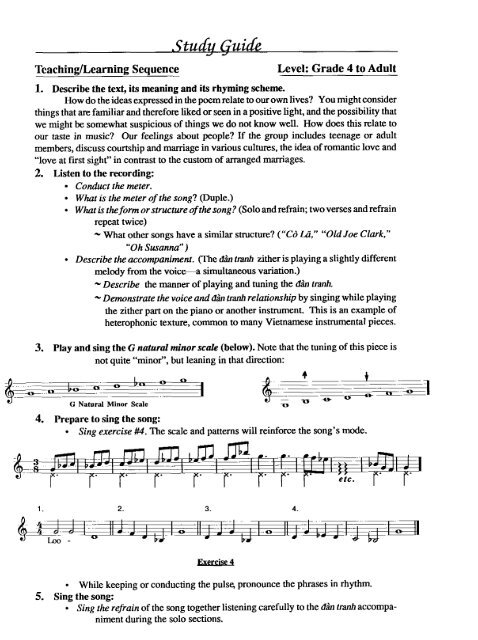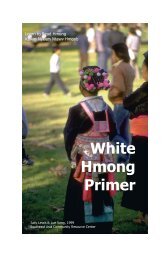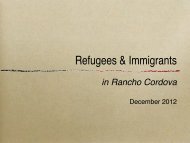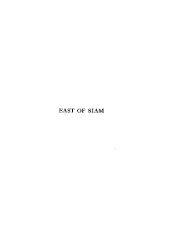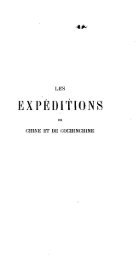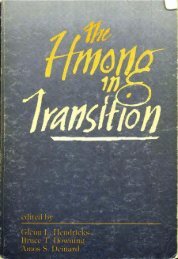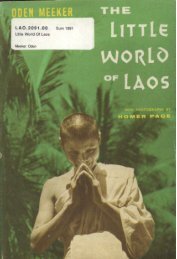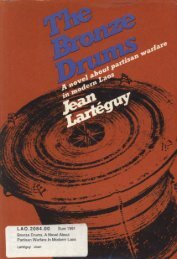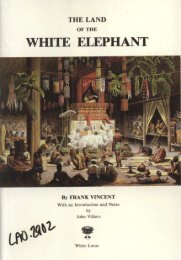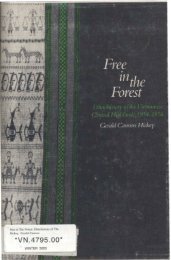and Temple Yards
iutnam From Rice Paddies and Temple Yards - Refugee Educators ...
iutnam From Rice Paddies and Temple Yards - Refugee Educators ...
- No tags were found...
You also want an ePaper? Increase the reach of your titles
YUMPU automatically turns print PDFs into web optimized ePapers that Google loves.
TcachingILearning Sequence<br />
Study Guide<br />
Level: Grade 4 to Adult<br />
1. Describe the text, its meaning <strong>and</strong> its rhyming scheme.<br />
How do the ideas expressed in the poem relate to our own lives? You might consider<br />
things that are familiar <strong>and</strong> therefore liked or seen in a positive light, <strong>and</strong> the possibility that<br />
we might be somewhat suspicious of things we do not know well. How does this relate to<br />
our taste in music? Our feelings about people? If the group includes teenage or adult<br />
members, discuss courtship <strong>and</strong> marriage in various cultures, the idea of romantic love <strong>and</strong><br />
"love at first sight" in contrast to the custom of arranged marriages.<br />
2. Listen to the recording:<br />
Conduct the meter.<br />
What is the meter of the song? (Duple.)<br />
What is the form or structure of the song? (Solo <strong>and</strong> refrain; two verses <strong>and</strong> refrain<br />
repeat twice)<br />
* What other songs have a similar structure? ("Cd La'," "Old Joe Clark,"<br />
"Oh Susanna")<br />
Describe the accompaniment. (The diin tranh zither is playing a slightly different<br />
melody from the voice-a simultaneous variation.)<br />
Describe the manner of playing <strong>and</strong> tuning the din tranh.<br />
* Demonstrate the voice <strong>and</strong> dh<br />
tranh relaaonship by singing while playing<br />
the zither part on the piano or another instrument. This is an example of<br />
heterophonic texture, common to many Vietnamese instrumental pieces.<br />
3. Play <strong>and</strong> sing the G natural minor scale (below). Note that the tuning of this piece is<br />
not quite "minor", but leaning in that direction:<br />
.., -.<br />
.<br />
G Natural Minor Scale<br />
4. Prepare to sing the song:<br />
Sing exercise #4. The scale <strong>and</strong> patterns will reinforce the song's mode.<br />
While keeping or conducting the pulse, pronounce the phrases in rhythm.<br />
5. Sing the song:<br />
Sing the refrain of the song together listening carefully to the dh<br />
tranh accompaniment<br />
during the solo sections.


